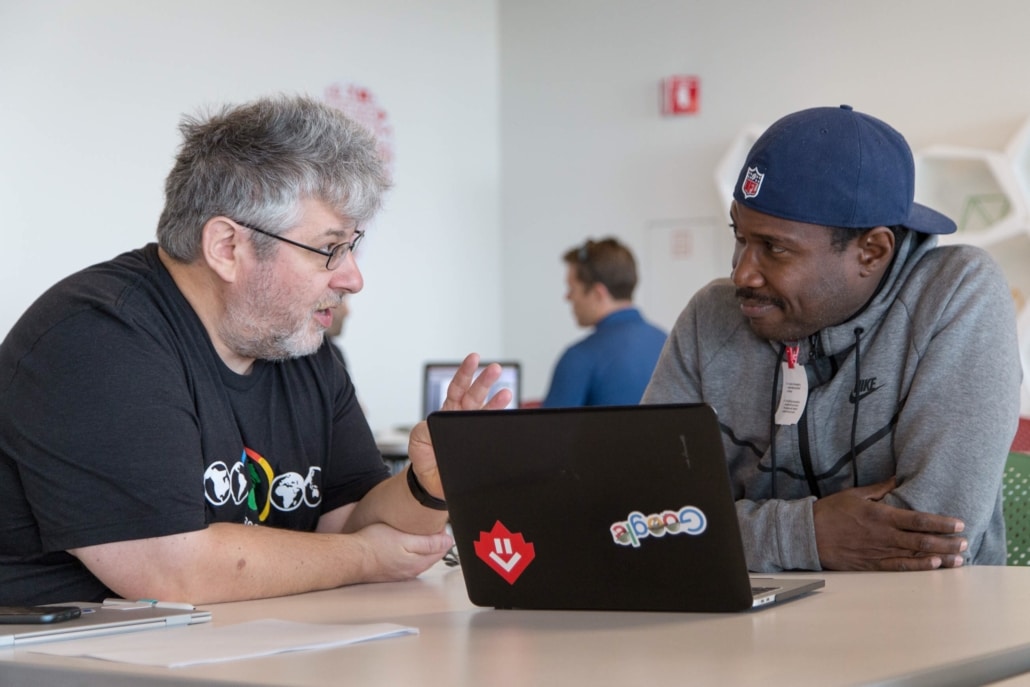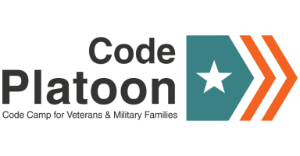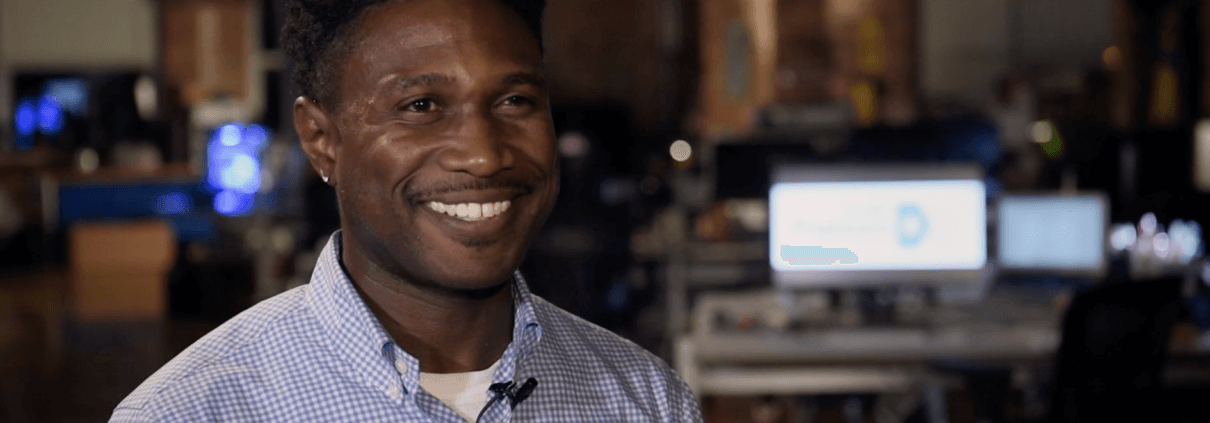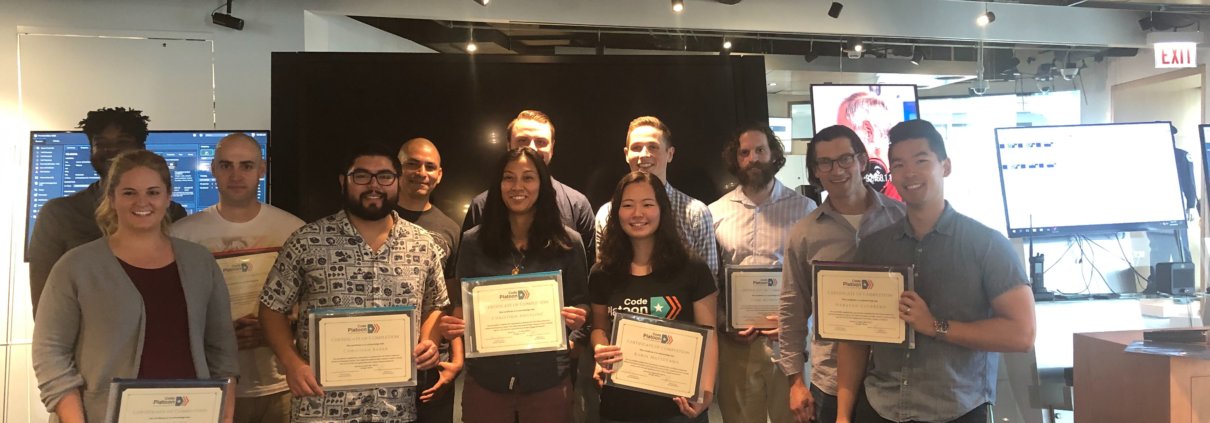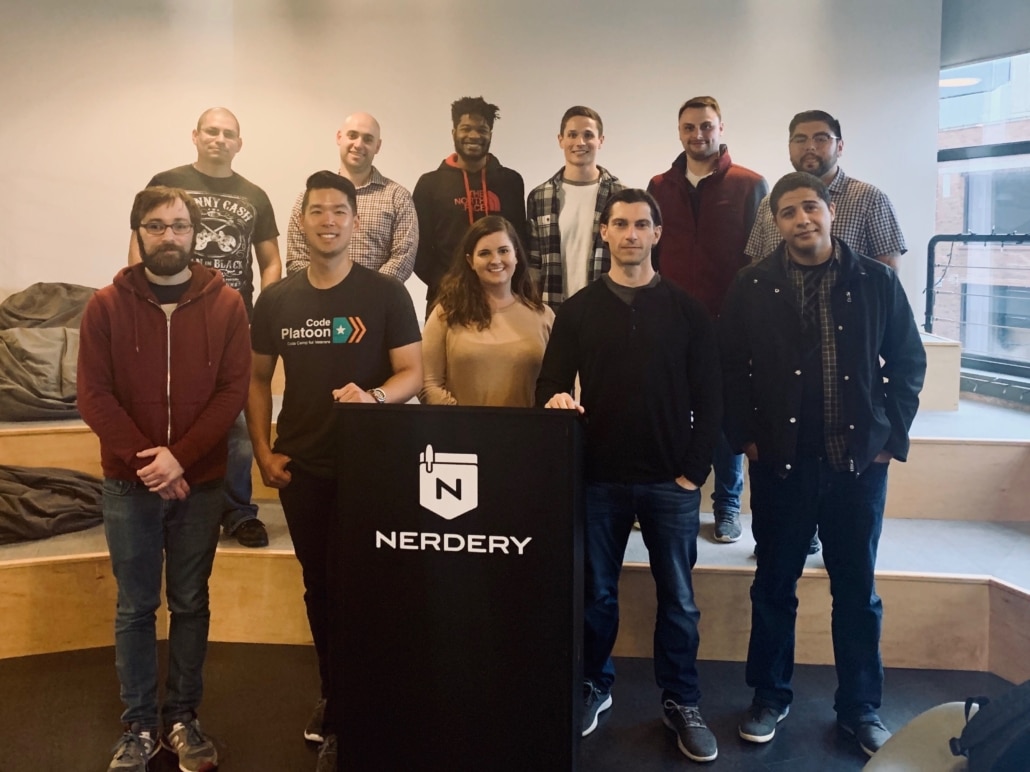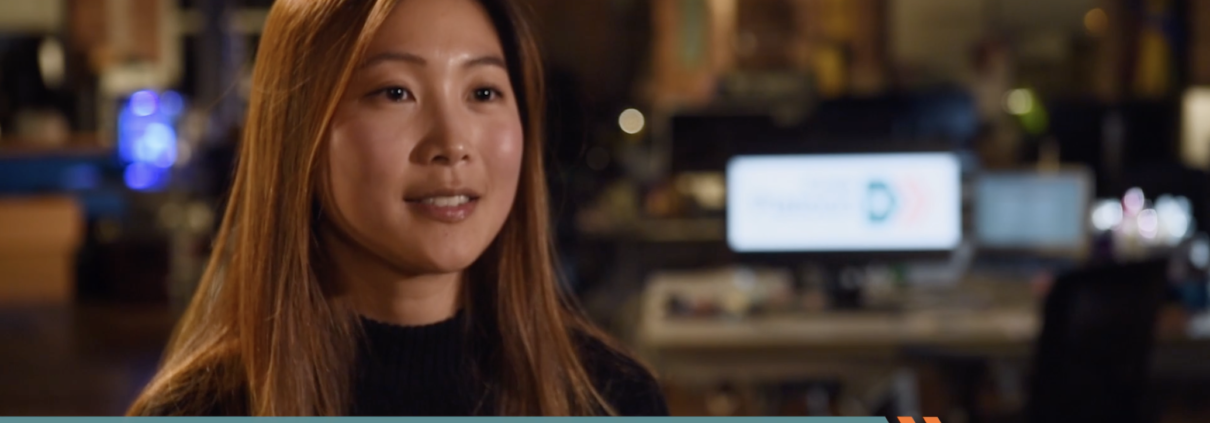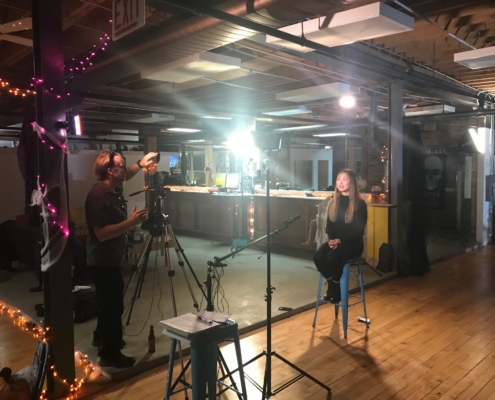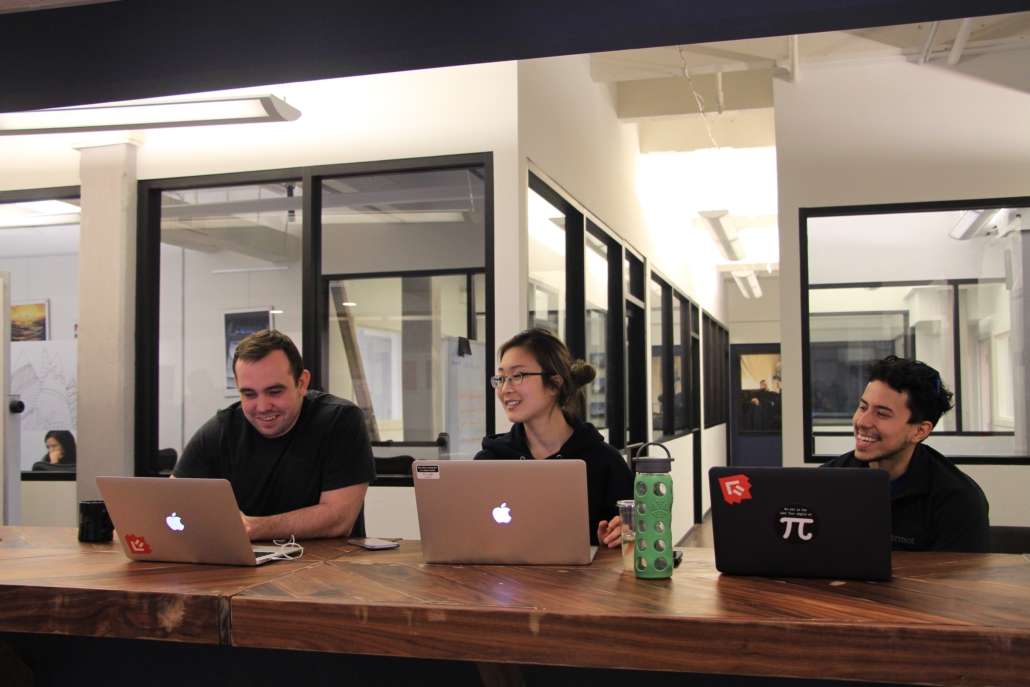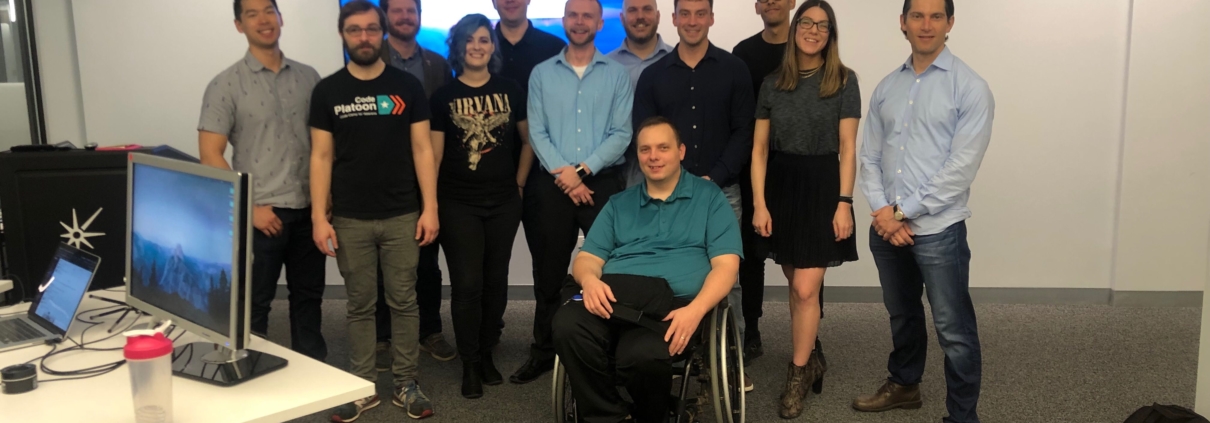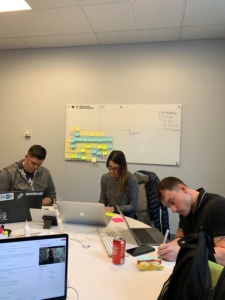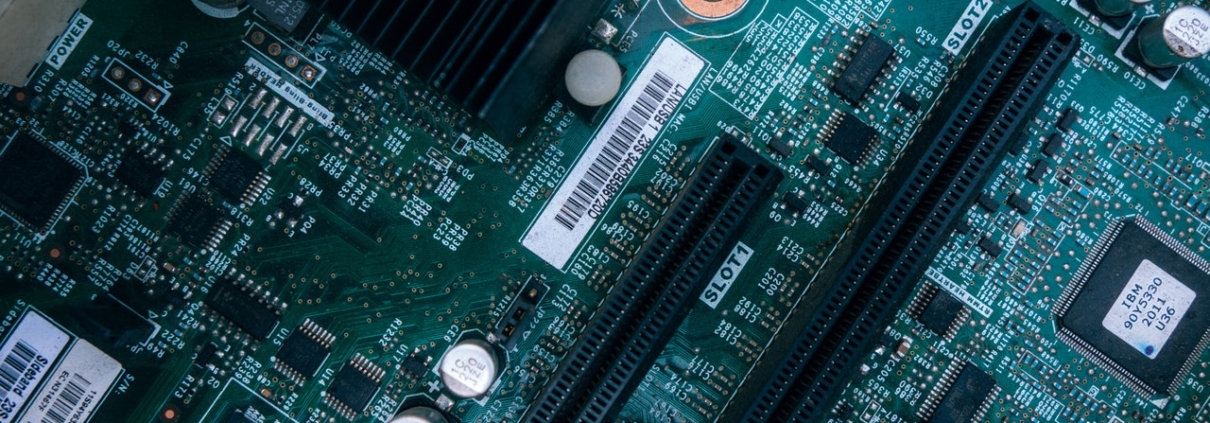Edward Wright, Alumni of the Month, July 2019
After serving in the US Navy for eight years as an aircraft mechanic, Edward decided that he wanted to switch careers to a more technology-oriented path. He attended college online for computer science, but didn’t get enough practical skills to actually bridge the gap to a full-time job as he intended. With a wife and children depending on him, Edward wanted to make sure that he had a clear path ahead of him that would lead to an education, income, and long-term potential.
Vocational Rehabilitation
While searching for a practical stepping stone, Edward heard about the Vocational Rehabilitation and Employment program through the Department of Veterans Affairs from someone he knew, and he applied.
To his surprise, Edward didn’t successfully make it into the program the first time, but he was encouraged by a contact at the VA to try again. During this same time, he relocated and was assigned a new point of contact for the program as well. Despite all the turmoil, Edward reapplied to the program.
Edward mentioned in his application for the Voc Rehab program that he wanted to attend a coding boot camp so that he could improve more on his programming ability than he was did while working on his bachelor’s degree. In fact, he had so much faith in the coding boot camp system that he was ready to pay for his training out of pocket. Fortunately, he didn’t have to make that financial commitment; with some patience, persistence, and a little bit of faith, he was able to make it into the VA’s Vocational Rehabilitation program to fund his training.
Training that works for veterans
Code Platoon wasn’t the only coding boot camp Edward considered when looking at options, but it was the best one for his needs. Code Platoon’s compatibility with the VA’s Voc Rehab standards helped of course, but Code Platoon also offered flexibility on payment options with generous scholarships if Voc Rehab didn’t work out. And no matter how Edward funded his training, Code Platoon’s focus on veterans made it a great choice for a former sailor who wanted to feel comfortable with his peers while training.
Whether it’s taking a second shot at technology education or trying more than once at a VA application for tuition, Edward believes it’s all about continuing to try.
“There was a time when I was leaving the service and I wasn’t sure how much career potential or learning ability I had left. I look back on that now, working for an international company like Grainger, and I can’t believe the difference of where I’m at. I know it sounds cliche, but if I can keep hitting a wall and trying again until I succeeded, you probably can too.”
Congratulations to Edward Wright, Code Platoon Alumni of the Month for July 2019!
As the largest B2B e-commerce retailer with more than half of our sales coming through a digital channel, Grainger has a high demand for skilled software developers. Code Platoon offers an extensive and unique approach to developing technical experts, and we are thankful to them for introducing us to Ed Wright. As a Veteran of the Navy, Ed brings a strong sense of teamwork and service, along with technical skills that enabled him to contribute quickly at Grainger.
– Sean McCormack, VP of Solutions Engineering, Grainger
Transcript of Edward Wright’s Code Platoon video
I joined in ’99, my first duty station was in Virginia Beach. I worked on the F-14 war plane. Working on airplanes, I found that attention to detail was very critical and that was one of the, I guess, traits I would say that I took from that to where I am now.
I knew I wanted to get into something related to IT or software development while I was in the military, but since I had already started down that road the VA didn’t want to pay for it and so I didn’t have the opportunity to try to transitioning into that area while I was in the military. When I came across Code Platoon, it sounded interesting immediately and so I did a little bit more research and found that it will probably be the best option for me, considering the cost between it and some of the other ones and I will say the location I thought was good for me as well, being here in Chicago.
With Code Platoon the thing I got out of it the most was the way Rod prepared everything before we ever got there. Some of the events that we went to, all the visitors we had, just all those things all put together I just felt like was critical to my success and me just sticking through it. It was a great experience. I would do it all over again. I tell my family members, anybody I’ve come across I would do this all over again. If I could talk my spouse into coming, I would.
The place where I ended up at, I felt was perfect, just perfect for me, and that place is a company called Grainger. At Grainger I’m a front end web developer intern. They’re an industrial company and working in aviation I actually knew who they were before I ever got here. The guys at Grainger were pretty excited to hear that and I just thought it was good for that reason.
